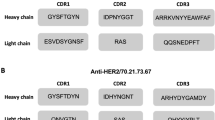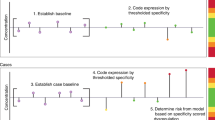Abstract
High levels of urokinase-type plasminogen activator (uPA) and plasminogen activator inhibitor type 1 (PAI-1) in breast cancer tissue extracts have been associated with rapid disease progression. In these studies, different enzyme-linked immunosorbent assay (ELISA) kits have been applied for the quantification, and consequently the ranges of uPA and PAI-1 levels reported differ considerably. Therefore, the Receptor and Biomarker Study Group (RBSG) of the European Organization for Research and Treatment of Cancer (EORTC) and a consortium of the BIOMED-1 project 'Clinical Relevance of Proteases in Tumor Invasion and Metastasis' initiated three collaborative between-laboratory assessment trials aimed at controlling uPA and PAI-1 antigen analyses. For this purpose, two control preparations were produced from different sources: pooled human breast cancer specimens (QC-240893) and human breast cancer xenografts raised in nude mice (QC-101094). The lyophilized preparations were stable for prolonged times (at least 3 and 27 months respectively) at 4 degrees C. Furthermore, a good parallelism following dilution was found for uPA and PAI-1. The data from QC trial no. 1 clearly indicated that acceptable between-laboratory coefficients of variation (CVs) for uPA (<8.2%) and PAI-1 (<16.6%) in QC-240893 could be achieved when the same type of ELISA kit (American Diagnostica) was used. From the second trial, in which ten EORTC laboratories each received five identical lyophilized QC-101094 samples, it appeared that the within-laboratory variations for uPA and PAI-1 determinations obtained by 'experienced' laboratories were lower (<12.9%) than those from non-experienced laboratories (<36.4%). In a third QC trial, five BIOMED-1 laboratories, all of which employed ELISA procedures for uPA and PAI-1, participated in six subsequent quality assessment rounds receiving five samples of QC-101094. Although for each laboratory the within-run CVs for uPA as well as for PAI-1 were low (<7.8%), the between-run CVs were found to be considerably higher (up to 56.2% for uPA and to 27.6% for PAI-1). Consequently, because of the different ELISA formats used, the absolute analyte values measured in the different laboratories varied substantially. The use of 'common external standards' in the different ELISAs resulted in a significant reduction of the between-laboratory CVs from 61.3% to 15.7% (uPA) and from 42.1% to 19.1% (PAI-1). The present data demonstrate that in multicentre studies the same ELISA kit should be used, and that external quality assurance (QA) is mandatory. Furthermore, it appears from the present study that standardization of the protein assay as a tissular parameter is imperative.
This is a preview of subscription content, access via your institution
Access options
Subscribe to this journal
Receive 24 print issues and online access
$259.00 per year
only $10.79 per issue
Buy this article
- Purchase on Springer Link
- Instant access to full article PDF
Prices may be subject to local taxes which are calculated during checkout
Similar content being viewed by others
Author information
Authors and Affiliations
Rights and permissions
About this article
Cite this article
Sweep, C., Geurts-Moespot, J., Grebenschikov, N. et al. External quality assessment of trans-European multicentre antigen determinations (enzyme-linked immunosorbent assay) of urokinase-type plasminogen activator (uPA) and its type 1 inhibitor (PAI-1) in human breast cancer tissue extracts. Br J Cancer 78, 1434–1441 (1998). https://doi.org/10.1038/bjc.1998.704
Issue Date:
DOI: https://doi.org/10.1038/bjc.1998.704
This article is cited by
-
Prognostic significance of VEGF and components of the plasminogen activator system in endometrial cancer
Journal of Cancer Research and Clinical Oncology (2020)
-
PAI-1 and HER2 interaction in advanced breast cancer disease: evidence for added benefit from trastuzumab in HER2-negative patients
Cancer Chemotherapy and Pharmacology (2015)
-
Prognostic impact of urokinase-type plasminogen activator system components in clear cell renal cell carcinoma patients without distant metastasis
BMC Cancer (2014)
-
uPA and PAI-1 as biomarkers in breast cancer: validated for clinical use in level-of-evidence-1 studies
Breast Cancer Research (2014)
-
uPA/PAI-1, Oncotype DX™, MammaPrint® Valeurs pronostique et prédictive pour une utilité clinique dans la prise en charge du cancer du sein
Oncologie (2014)



